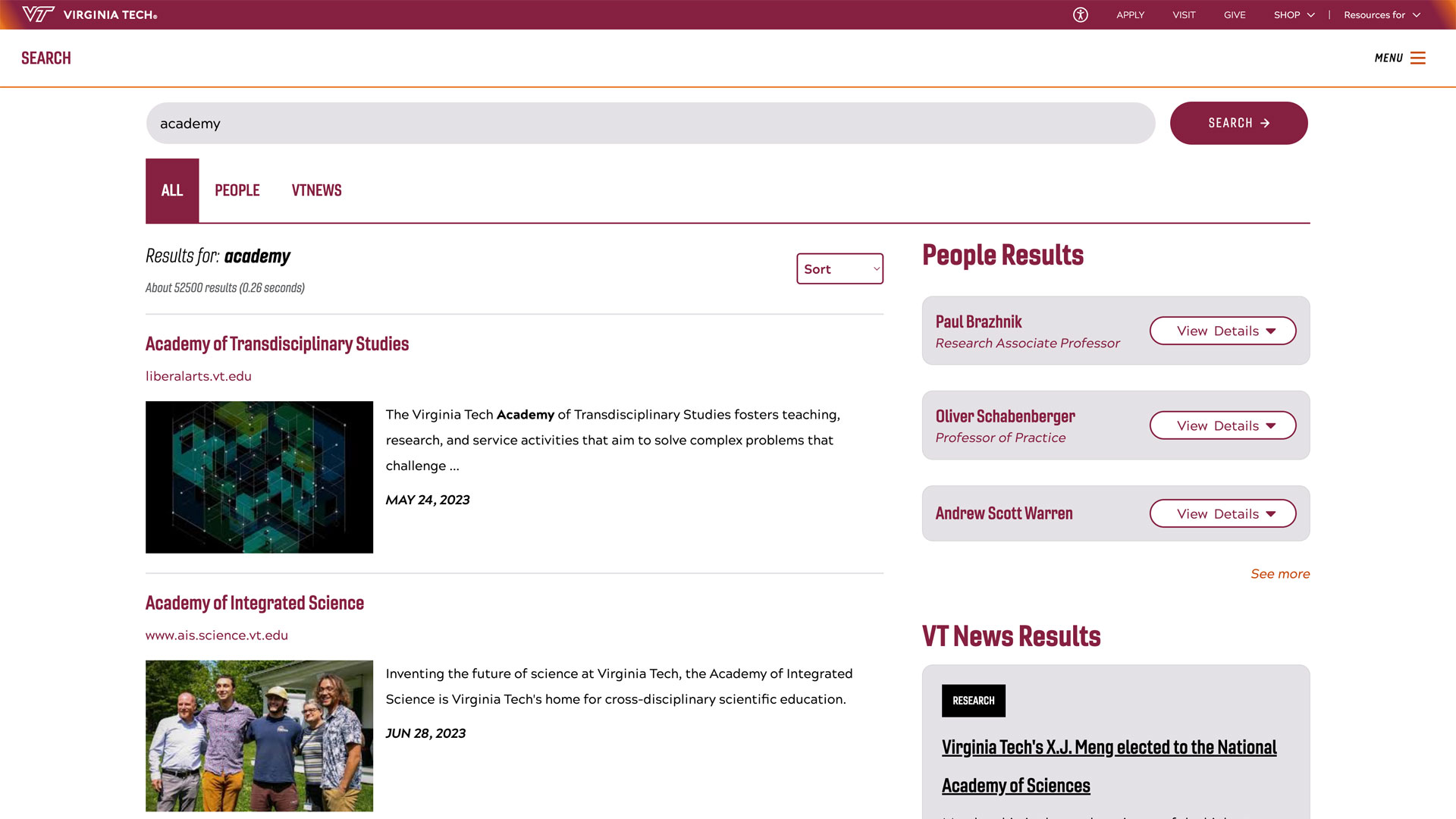Controlled Environment Agriculture Summit cultivates connections for the future of agriculture
"We have the incredible opportunity before us to feed the growing planet through controlled environment agriculture,” said Virginia Secretary of Agriculture and Forestry Matthew Lohr.

The second annual Controlled Environment Agriculture (CEA) Summit East, held this past fall at the Institute for Advanced Learning and Research in Danville, marked a significant milestone in fostering collaboration and information sharing within the dynamic field of controlled environment agriculture, the fastest-growing sector of agriculture in Virginia.
Co-hosted by Indoor Ag-Con and the Virginia Tech Institute for Advanced Learning and Research Controlled Environment Agriculture Innovation Center, a partnership between the School of Plant and Environmental Sciences at Virginia Tech, the Virginia Seafood Agricultural Research and Extension Center, and the Institute for Advanced Learning and Research, the event drew 240 attendees from 33 U.S. states plus Canada, the Netherlands, and Sweden.
"We're all here to support the future of agriculture," Virginia Secretary of Agriculture and Forestry Virginia Matthew Lohr said in his keynote address. "We have the incredible opportunity before us to feed the growing planet through controlled environment agriculture.”
(From left) Michael Schwarz, Associate Director of the CEA Innovation Center and Director of Virginia Seafood AREC; Brian Sullivan, CEO of Indoor Ag-Con; John H. Hughes IV, Executive Vice President of Operations at IALR; Matthew Lohr, Virginia Secretary of Agriculture and Forestry; Scott Lowman, Co-Director of the CEA Innovation Center and Vice President of Applied Research at IALR. Not pictured: Michael Evans, Co-Director of the CEA Innovation Center and Director of the School of Plant and Environmental Sciences.

Amid the evolving landscape of agriculture ripe with environmental challenges, rising costs, and surging demand for food, Lohr pointed to the potential of controlled environment agriculture, which takes a technology-based approach to farming, to augment traditional agriculture production.
"You have an excellent mix of industry professionals, including growers, equipment vendors, academic researchers, political leaders, and prospects all coming together to learn, support each other, and discover best practices," said conference attendee Heather Croushorn of Hyve Indoor Farming Systems.
Croushorn showcased Hyve's vertical racking systems for indoor farming at the event expo, contributing as one of the 21 exhibitors who offered insights into the latest innovations and services.

"CEA, with a focus on control, enables us to comprehensively alleviate the impacts of climate change on traditional agriculture," said Michael Schwarz, associate director of the Controlled Environment Agriculture Innovation Center and director of the Virginia Seafood Agricultural Research and Extension Center in Hampton.
In one breakout session, Michael Evans, co-director of the CEA Innovation Center and director of the School of Plant and Environmental Sciences, presented practical strategies for growers to enhance productivity in controlled environments, stressing the role of environmental conditions in optimizing crop yields. Through meticulous regulation of factors such as water quality, nutrient levels, humidity, and biosecurity, CEA facilitates the creation of optimal environments for cultivating various crops, all while conserving resources like land and water.
"Whether it's a fish in aquaculture, a plant in hydroponics, or combined systems that reuse water, that type of control is the driver. And we're just on the cusp of it," Schwarz said.

The CEA Summit showcased four educational tracks – grower, business and marketing, up and coming technology and education, and outreach and workforce development – covering various topics such as scaling up, negotiating energy costs, the future of CEA crops, and getting started in aquaponics.
While some setbacks are anticipated as new industries evolve, Lohr pointed to indoor agriculture businesses and university research in the state as pivotal in driving economic transformation. Lohr said the synergy between economic development and applied research facilitated by institutions such as the Institute for Advanced Learning and Research (IALR), Virginia Tech, and Virginia State University "position the commonwealth as the go-to state for CEA growth in this rapidly growing industry."
These institutions prioritize and invest in education and workforce development, acknowledging their pivotal role in shaping the future of food production, he said. Underscoring the impact of this commitment, a panel led by Kaylee South, assistant professor of controlled environment agriculture in the School of Plant and Environmental Sciences, showcased recent graduates who offered insights into the skills they developed to overcome challenges and seize opportunities as they enter the field of CEA.
Highlighting the broader impact of conferences like CEA Summit East, Schwarz described them as one-stop shops that facilitate real-time discussions, enabling academia to understand industry challenges and incorporate them into applied research and educational programs.
"Industry is doing certain things and communicating within their sectors," Schwarz said. "By coming together through programs like this, they get direct interaction with educational and academic institutions like ours and with IALR to see what is the up-and-coming technology."
"Networking is really a key in CEA because we're at a stage where a rising tide lifts all boats. This conference gives us the chance to celebrate success, but more importantly, to find potential answers to problems and avoid pitfalls," said Croushorn, who is looking forward to the 2024 edition of the summit.
Plans for the 2024 edition of CEA Summit East are forthcoming.








